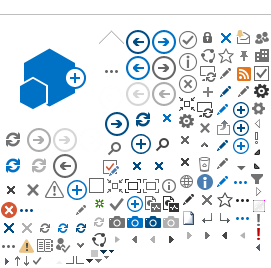The organization and management of a classroom reflects the quality of training and the type of instruction performed in that classroom. The instructor's ability to organize and manage the classroom is highly correlated to a given student's rate of progress, safety, and the development of good work habits. The arrangement of a classroom should, therefore, present an orderly, pleasing appearance and an atmosphere conducive to learning. The instructor is required to have a positive climate and culture daily, which allows all students to learn and all teachers to teach. The use of evidenced based instructional and behavioral strategies/techniques will be expected of all instructional staff. The arrangement of equipment should meet the instructional and safety needs of the training area. All instructional supplies should have storage areas (e.g. "a place for everything and everything in its place").
Each instructor is required to initiate and maintain a "good housekeeping" system to suit the classroom area. Suggestions, not an all-inclusive list, include:
- Each student should take care of his work station daily.
- Floors should be cleaned daily of any visible trash.
- Complete housekeeping should be done at least twice a year, or more often, if necessary.
- Equipment should be cleaned and serviced on a routine basis.
- Proper channels for surplus and/or disposal should be used for unused or inoperable equipment and supplies through Facility Services.
- A running inventory of instructional materials, supplies and equipment should be maintained for each classroom area and updated annually.
- Any repair requests to the building or equipment should be reported in writing to the Vocational Training (VT) Supervisor/Designee for processing.
Each classroom is required to document and enforce a realistic safety program, relevant to the instructional program that meets standards of the Occupational Safety and Health Act (OSHA).
Care of shop tools and equipment is in accordance with the following guidelines:
- All instructional supplies should be marked, as appropriate, for easy identification by students.
- Instructional supplies should be arranged in a visually attractive and logical manner, as appropriate, for ease of daily checks and monitoring.
- When unused, instructional supplies should be stored in a cabinet or on shelves that are plainly marked with a space for each supply.
- All classrooms using instructional supplies should identify a designee to monitor supply storage and make recommendations regarding potential need to surplus an item. The instructor should be able to make minor repairs and adjustments to equipment within the classroom.
- All equipment should be cleaned daily.
- All student issued instructional materials/supplies should be marked with the student's name or a number-coded system for identification.
- Instructors should inspect instructional supplies at random intervals for condition and completeness.
Instructors should require students to keep instructional supplies clean and in good condition.
Required Classroom Safety Equipment (stocked by the Materials Handling Training Program):
- Auto Mechanics: safety glasses, and ear protection
- Business: N/A
- Building Trades: safety glasses, and ear protection
- Food Service: hair nets and/or ball caps
- Health Occupations: N/A
- Materials Handling: N/A
Safety shoes are purchased as needed by assigned Vocational Training Department staff using the Client Credit Card out of 302 funds, since they are purchased for the students and not for a curriculum project.
Instructional materials and supplies are requested by the Instructor, based on curricular requirements. Some materials and supplies are available through the Materials Handling Training Program Storeroom and others through the Main WWRC Central Storeroom. Staff use the eVA system to request a purchase. When items are received for the Vocational Training Department, they are routed to the Materials Handling Training Program Storeroom for stocking, inventorying, and distribution, processed as an instructional curriculum project for that training program. Note that, for items stocked and directly available through the Materials Handling Training Program, some Instructors still use Form 11's to requisition these items or send an email stating requested supplies. If the item is to be delivered directly to a student, the following information must be included: Name (first initial/last name), PID#, issue date, and quantity to be issued.
Textbook Ordering Form
CWDD Work Order Format and Process (3.2.3)
Equipment repair requests are to be routed to the designated supervisor for approval, then to be processed through the WWRC Crow Canyon System, in accordance with the WWRC Administrative Governance Manual, Section 2.5.3.
Instructors should follow established WWRC business practices governed by Commonwealth of Virginia policies for removal and disposal of obsolete or no longer needed classroom equipment. Items should be delineated and sent to a designated Vocational Training Department Program Support Technician, with a copy (electronic or hardcopy) to the Department Chair and Vocational Training Administration. The designated Vocational Training Department Program Support Technician will notify other instructional training areas, as well as #WWRC Lead Secretaries to determine if any items may be moved to another location on campus. Remaining items will be removed by WWRC Facility Services through a Work Order request.

